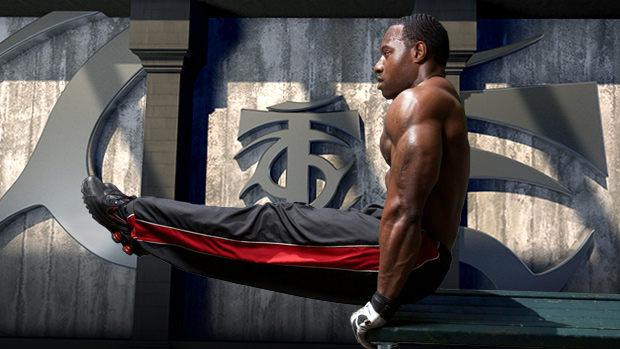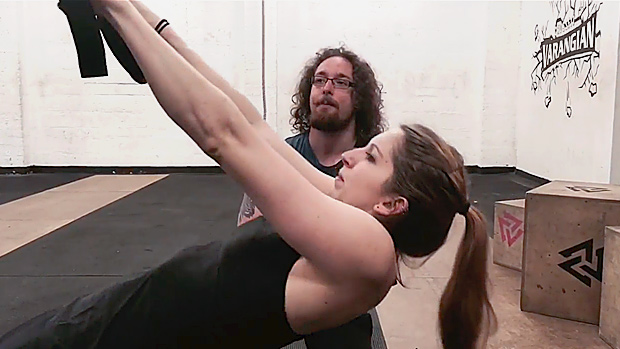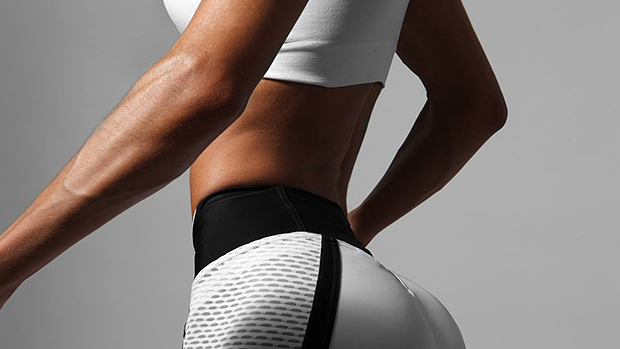Here's what you need to know...
- Mechanical drop sets involve switching to easier variations of the same exercise to extend the amount of time your muscles are under tension.
- You can turn bodyweight exercises into mechanical drop sets by "shortening" or "lengthening" your body and changing the number of contact points to the ground.
- These variations change the leverage in a favorable way, which allows you to continue the set without exceeding your capacity to recover.
- While the subtle changes in body positioning may not seem like much, they make for a surprising challenge.
Advanced Bodyweight Training
If you're a fan of calisthenics and bodyweight training and take pride in your mastery of these old-school movements, it's time to take it up a notch through bodyweight mechanical drop sets.
Dynamic Growth Is All About Leverage
With conventional weighted mechanical drop sets, you commonly switch to lighter loads or easier variations of the same movement to extend time under tension.
However, with calisthenics and bodyweight exercises, you change the level of difficulty for a given movement mostly by "shortening" or "lengthening" your body and changing the number of contact points to the ground (or bar or gymnastics rings).
This changes the leverage in a favorable and highly efficient manner, which allows you to continue a set without exceeding your capacity to recover.

Warning: This is Difficult Stuff!
Unless you've been practicing advanced bodyweight exercises for a while, some of these workouts may be too tough for you (for now).
Here's how to get around that: Instead of starting with the first, most difficult exercise in the sequence, simply start with the second, somewhat easier exercise. As you get stronger and more coordinated, you'll soon be able to add in the first movement.
Now, let's take a look at some of these bodyweight mechanical drop sets, which are also known as advanced regressions in progressive calisthenics.
Regressing From Longer to Shorter Body Length
Upper Body (Vertical) Push
- Freestanding Handstand Push-Up
- Wall-Assisted Handstand Push-Up
- Feet Elevated Pike Push-Up
Upper Body (Vertical) Pull
- Ice Cream Makers (Tucked) or Palms Facing Each Other (neutral grip) Pull-Up
- Palms Facing Each Other (neutral grip) L-Sit Pull-Up
- Sit Back Chin-Ups
Lower Body
- Walking Pistol Squat
- Walking Long Step Squat/Lunge
- Walking Short Step Squat/Lunge
Regressing From Fewer to Greater Contact Points
Again, if the first exercise in the sequence is too advanced for you right now, just start with the second movement.
Upper Body (Horizontal) Push
- Tuck Planche Push-Up (parallel bars)
- Feet Elevated Push-Up
- One-Leg Push-Up
Upper Body (Horizontal) Pull
- Half Tuck or Full-Tuck Front Lever Pull-Up
- Australian Pull-Up (straight leg)
- Australian Pull-Up (knees bent)
Lower Body
- Hip Thrust/Glute Bridge with Elevated Feet & Shoulders
- Supine Hip Thrust/Glute Bridge with Elevated Feet (arms resting on floor)
- Supine Hip Thrust/Glute Bridge (arms resting on floor)
Advanced Core Regression
Dynamic Core Movement:
- Dynamic Front Lever Pull
- Dynamic Dragon Flag
- Decline Bench Leg Raise
- Decline Windshield Wiper
Application and Rep Ranges
While the subtle changes in body positioning may not seem like much, they make for a surprisingly humble challenge, especially for haters of bodyweight training.
If you're a beginner or new to bodyweight exercises, you might want to devote an entire planned workout to these movements. In contrast, advanced lifters are encouraged to add some extra volume at the end of their very strongest planned workout days by doing these bodyweight drop sets.
Likewise, try these movements when you find yourself in situations with minimal time and equipment available.
Shoot for short rest periods – 60 to 90 seconds in-between sets.
Here are some target volume/total rep ranges to shoot for with the examples above:
Upper Body Push/Pull: 50-100 total reps split over 3-4 sets
- Each set will look like this:
- 5-10 reps of the first movement
- 5-10 reps of the second movement
- 5-10 reps of the third movement
Lower Body: 100-200 total reps split over 1-2 sets
- Each set will look like this:
- 20-30 reps of the first movement
- 20-30 reps of the second movement
- 20-30 reps of the third movement
Dynamic Core Movement: 25-50 total reps split over 1-2 sets
- Each set will look like this:
- 5-10 reps of the first movement
- 5-10 reps of the second movement
- 5-10 reps of the third movement
Note: Thanks to Max Shank, Al Kavadlo, Grace Menendez, Beth Andrews and Danny Kavadlo for the additional videos.




